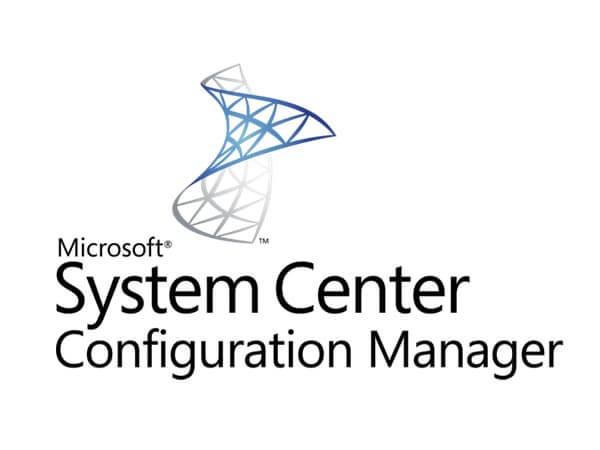Rama actual del administrador de configuración 1702 KB4022075. The “Issues that are fixed” list is not inclusive of all changes. En cambio, it highlights the changes that the product development team believes are the most relevant to the broad customer base for Configuration Manager. Versión 1702 is available as an in-console update that can be installed at the top-tier site in a hierarchy.
Contenido
Issues that are fixed
Operating System Deployment and task sequences
- If state store folders on a state migration point (SMP) are manually deleted, the SMS Executive service may terminate unexpectedly when the Delete Aged Computer Association Data task is running. In addition, other state stores on the same SMP may be deleted unexpectedly.
- El Prepare ConfigMgr Client for Capture task sequence step now uninstalls the client before it continues to the Prepare Windows for Capture paso. This prevents possible issues that affect the initialization of the Configuration Manager client after the operating system image is captured.
- Task sequences may not start on a client in an environment that uses many complex task sequences. Por ejemplo, 35-40 task sequences each with one hundred steps, may encounter this issue. Errors that resemble the following are recorded in the TSAgent.log on the client. When this issue occurs, there will be a delay of approximately five minutes between the first two log entries. Initializing policy env variables No policy found in local WMI reply has no message header marker Failed to request policy assignments (Code 0x80004005) Error initializing TSPolicyManager. Code 0x80004005 Error initializing policy environment variables. Code 0x80004005 Error initializing TS environment. Code 0x80004005 Task sequence launcher advertisement failed! Code 0x80004005 CTSAgent::Execute – Failed to launch Task Sequence manager.
- A task sequence defined by using a time-out value of 0 will not run if there is a corresponding maintenance window with a duration of fewer than 12 horas. A message resembling the following is recorded in the ServiceWindowManager.log on the client. WillProgramRun called with: Runtime:43200, Tipo:5
No Service Windows of this type exist.
There does not exist an All Programs window for this duration and the all programs window is not used as a fallback. The Program will not run. - Optional components may now only be added when the version of the Windows ADK and the version of the Windows PE Boot Image match.
- Changing any options of the Format and Partition Disk task sequence step results in the “Make this the boot disk” option being de-selected.
- The SMS Offline Servicing Manager component is started automatically, at unexpected times, by the SMS Executive service. This can result in operating system images being updated incorrectly.
- Selecting the Clear required PXE deployments option for a collection in the Configuration Manager Console on a Central Administration Site (CAS) results in the removal of PXE flags for all devices.
- El Add Boot Image Wizard does not import images created by using older versions of the Windows ADK than what is currently installed. An error resembling the following is recorded in the smsprov.log on the site server. ERROR> Error -2146498530 returned to execute the command line: "{dism.exe}” /Image:{imagepath}” /Add-Package /PackagePath:"{package_path}” Failed to insert OSD binaries into the WIM file
- Task Sequences do not display as expected in Software Center. This occurs if all client policies are not processed after you upgrade to a new version of the Configuration Manager client.
- El Install Application task sequence step may fail when it is added immediately after a step that restarts the computer. This issue is more likely to occur on computers that use fast storage, such as solid-state disks. An error resembling the following is recorded in the smsts.log file on the client: Install application action failed: ‘{deployment_name}’. Error Code 0x80004005
- Machine variables used for operating system deployment are not replicated correctly in a Configuration Manager hierarchy. This can result in task sequence failures for deployments that rely on those variables.
Site Systems
- Installation of site roles that rely on IIS now records which specific IIS component, such as “IIS 6 Management Compatability,” is missing.
- Errors are recorded by the SMS Policy Provider, and the SMS Executive service (smsexec.exe) may consume too much memory on a site server if the following conditions are true:
- An application is created by using the deployment type.
- The option to “Allow this application to be installed from the Install Application task sequence action without being deployed” is enabled.
tsapphandler[ScopeId_…]: Failed to generate CI Assignment, Status = 1 (0x00000001).
tsapphandler[ScopeId_…]: rolling back SQL transaction. Will retry later
Could not check TS app policy changes for application with CIID {CIID}, will retry..
Software Distribution and Content Management
- A warning is now displayed if you try to retire an application that is referenced in a task sequence.
- The App-V client is now automatically enabled on Windows 10 Versión 1607 or a later version client when an App-V deployment type is published.
- Updated versions of previously deployed Universal Windows Platform (UWP) applications are not installed as expected.
Site Administration
- When you use an Enterprise Site Mode List that is configured in a user policy (GPO), the Configuration Manager client creates a local computer policy with its own Enterprise Site Mode List. That computer policy takes precedence and prevents the Enterprise Site Mode List in the user policy from functioning.
- Duplicate hardware identifier information is not replicated globally. This causes administrators to have to re-create the list for each child’s primary site in a hierarchy.
Actualizaciones de software
- A server that belongs to multiple collections may not receive software updates or deployments if it is clustered. This occurs when only one of the device collections has the All devices are part of the same server group option enabled.
Updates and Servicing
- The Service Connection Tool (ServiceConnectionTool.exe) fails and generates an error message that resembles the following if SQL Server is installed remotely and configured to use a nonstandard port.
Unhandled Exception: System.Data.SqlClient.SqlException: A network-related or instance-specific error occurred while establishing a connection to SQL Server. The server was not found or was not accessible. Verify that the instance name is correct and that SQL Server is configured to allow remote connections. (provider: Named Pipes Provider, error: 40 – Could not open a connection to SQL Server) —
-> System.ComponentModel.Win32Exception: The target account name is incorrect
Mobile Device Management
- The Exchange Server Connector may generate error messages that resemble the following in the easdisc.log file when it processes discovery data: ERROR: [MANAGED] An unhandled system exception occurred when creating an EAS device from the statistics. [System.NullReferenceException: Object reference not set to an instance of an object. NotaThis error affects only Hosted Exchange environments and does not affect scheduled discovery. If the associated data is not processed when the error occurs, it will be processed during the next scheduled discovery.
- The Exchange Server Connector does not discover any devices if the Exchange Client Access server (CAS) is an earlier version than the Exchange Mailbox server.
Cliente
- Configuration Manager clients installed in a non-default location may be stuck in Provisioning Mode after an in-place Windows 10 upgrade.
Configuration Manager Console
- The Configuration Manager console may terminate unexpectedly when you search for boundary groups in the Fallback Boundary Groups window. Además, you receive an error message that resembles the following:
Unhandled exception has occurred in your application.
InvalidArgument=Value of ‘1’ is not valid for ‘index’.
Parameter name: index.
Windows Store for Business
- Windows Store for Business synchronization may fail after a restart of the SMS Executive service. The WsfbSyncWorker.log contains an error message that resembles the following just after startup: System.ObjectDisposedException: Cannot access a disposed-of object





















